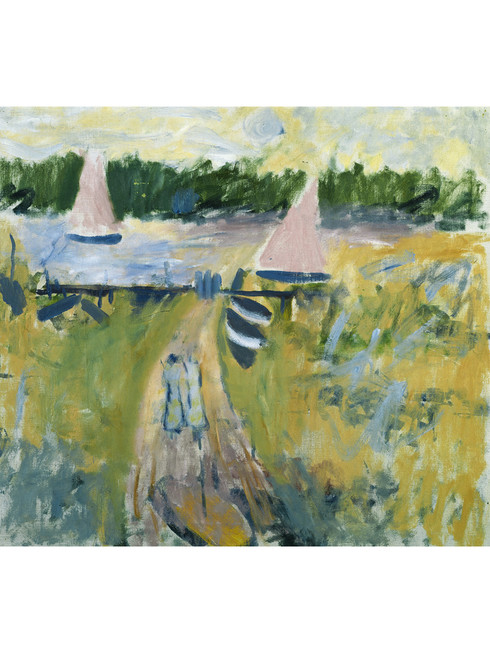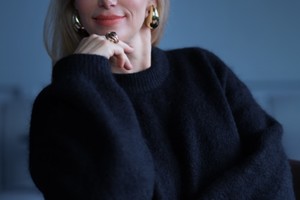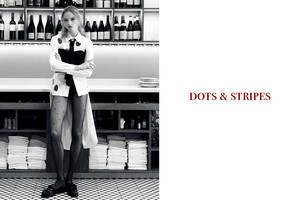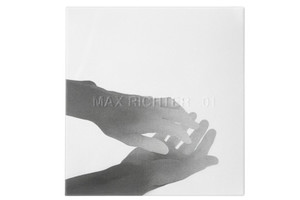An Interview With Curator Matilda Olof-Ors
Written by Josie McNeill by Josie McNeillA large sculpture composed of stacked wooden logs greets visitors as they enter the Moderna Museet’s “Pink Sails – Swedish Modernism in the Moderna Museet’s Collection,” exhibit that was unveiled on June 17. The sculpture, “Horizon of Me(aning)” by Carola Grahn, is a part-performance piece that, per the artist’s instructions, must be privately assembled in the exhibit while having a conversation about mental health.
“Horizon of Me(aning)” speaks on how nature is animate, and although it is from 2015 originally, the work's theme of trust in nature connects to many of the other pieces in the exhibit from the 20th century. 'Pink Sails' explores this theme, along with other progress and changes in society in this age, through the lens of modernist artwork.
‘Pink Sails,” curated by Matilda Olof-Ors, is a part of the museet’s new exhibition program in which each exhibit aims to explore art historical contexts instead of simply showcasing the chosen pieces chronologically.
The exhibit draws its title from Ragnar Sandberg’s 1934 painting of the same name. For Olof-Ors, she was inspired to name the exhibit after this painting because “the lyrical and open character of the title also speaks to a strand of Swedish art at the time that existed side by side with the more well-known modernist narratives of transition and progression.”
Can you start off by just giving me an overview of the exhibit?
It's based mainly on works from the Moderna Museet’s collection and covers the period from 1900s to the 1940s. I’ve been interested to see how the very drastic and rapid changes in society, of course, also reached the realm of art. You find it in both the artists’ quest for new motifs, and in the motifs themselves, capturing the new society-–everything from the fast growing cities to the industrial sites. But also I think it’s reflected in how the artists’ constantly strive to push the boundaries in search for new expressions, as well as in the artists that were rather turning their gaze inwards, using inspiration from fantasy, from fairy tales, from literature, and from sort of a non-visual world. It is also interesting that these tendencies exist side by side; it’s not like one thing or the other.
What was your process of curating the exhibit? Did you come up with the idea first and then find paintings to fit in or were you inspired by the collection of paintings?
The museum has a fantastic collection of works from these periods, so it’s been most inspiring to go back and look into that to explore. As the exhibition is based on our collection, limitations are of course inevitable, and I have included a few loans from neighboring institutions like National Museum and an institution in Uppsala, Bror Hjorths Hus, The Hilma af Klint Foundation and the Swedish Radio. The curation process, of course, has involved the compilation of a few monographic rooms, and also outlining some more thematic contexts.
How did you choose the sub themes for the exhibit?
It’s been a combination of posing questions and exploring: What art works, artists, and themes do we have in the museum’s collection? What sort of stories can we tell? What is interesting and relevant today? I think this period is interesting to look at now, almost 100 years later. Today, there’s another war going on in Europe. We experience very drastic changes in society, still going faster and faster as well. And I think we again gaze at nature as a way of searching for solutions to the challenges that we face today. To conclude, some prevailing themes in the early and mid 1900s are still very present or reoccurring today.
I was gonna ask you to talk about that a little more. How do you think ‘Pink Sails’ is still relevant in today’s world?
I would say that history is always relevant. We both get to know the history and get to reflect on contemporary society. As I mentioned earlier, many of the things that we are facing in the show are also very present today.
Was there a piece of exhibit that stood out to you as being particularly impactful?
One of my favorites is that wall [pointing]. I really like the texture, and the combination of the textile work by Anna Casparsson and the Vera Nilsson painting. I think they grasp some of the atmosphere that I was aiming for in this room. But also, I do have so many favorites.
And then is there like a central message you want people to take away that are visiting the exhibit?
Not particularly. It’s more that I hope that everyone would see and find something that they could relate to in the exhibition. And then did it come together the way you initially visualized it? In a way, yes. I think it’s so interesting working with contexts and ideas that you could start at one end, and then you realize you end up somewhere else once you sort of set the tone.
And then how do you think Swedish modernism has evolved since the 20th century from when these paintings are from?
That’s such a long story to tell. Of course, history is always changing. I would say the way we look at these paintings now is totally different than how they were perceived in the 1920s, or even in the 1970s, or the 1980s. I would argue that our relation to what we see is always the present one – both the artworks and how we look at them, but also how we interpret them is in a totally different way today than in the past













